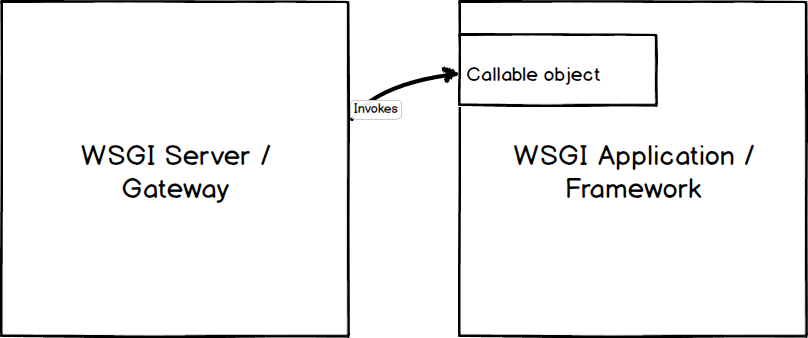Werkzeug WSGI web application library¶

Fig. 145 WSGI Server / Gateway invokes callable object served by the WSGI Application / Framework¶
Werkzeug Definition¶
werkzeug German noun: “tool”. Etymology: werk (“work”), zeug (“stuff”)
Werkzeug is a comprehensive WSGI web application library. It began as a simple collection of various utilities for WSGI applications and has become one of the most advanced WSGI utility libraries.
It includes:
An interactive debugger that allows inspecting stack traces and source code in the browser with an interactive interpreter for any frame in the stack.
A full-featured request object with objects to interact with headers, query args, form data, files, and cookies.
A response object that can wrap other WSGI applications and handle streaming data.
A routing system for matching URLs to endpoints and generating URLs for endpoints, with an extensible system for capturing variables from URLs.
HTTP utilities to handle entity tags, cache control, dates, user agents, cookies, files, and more.
A threaded WSGI server for use while developing applications locally.
A test client for simulating HTTP requests during testing without requiring running a server.
Werkzeug doesn’t enforce any dependencies. It is up to the developer to choose a template engine, database adapter, and even how to handle requests. It can be used to build all sorts of end user applications such as blogs, wikis, or bulletin boards.
Flask wraps Werkzeug, using it to handle the details of WSGI while providing more structure and patterns for defining powerful applications.
Note
Last change: Tue, 03 Aug 2021 10:25 PM UTC